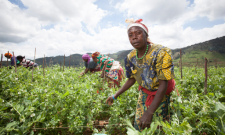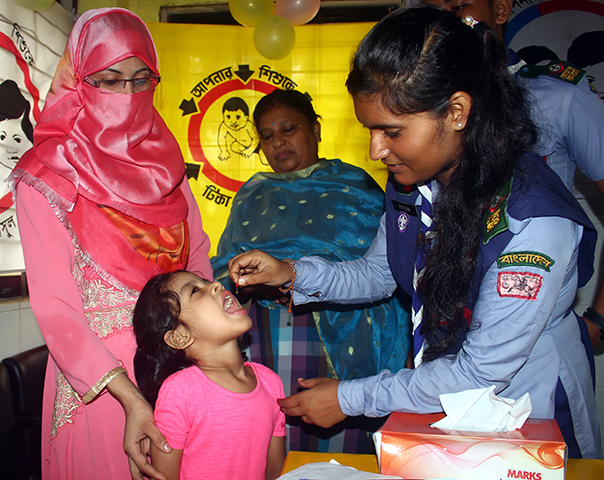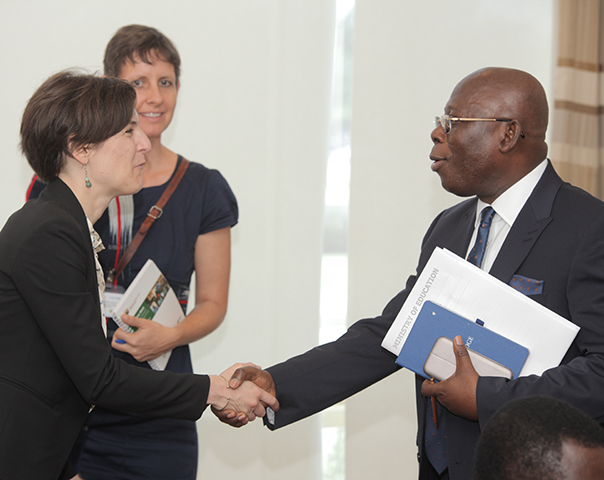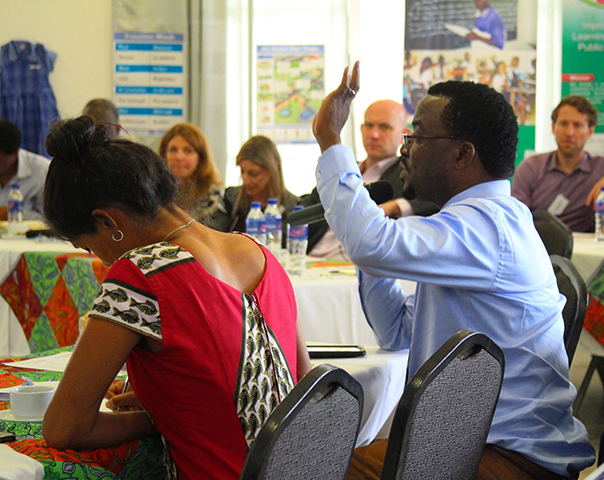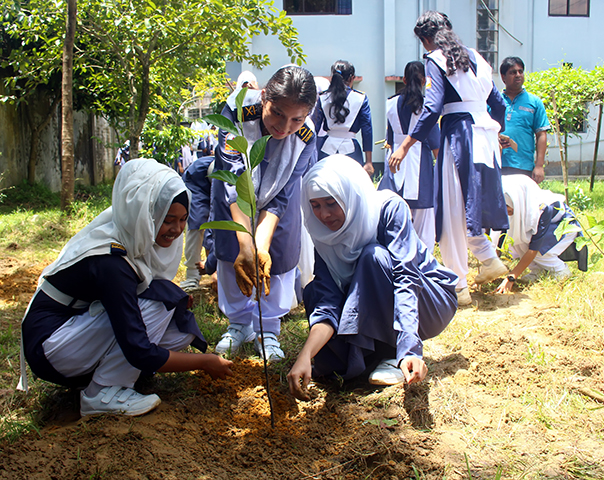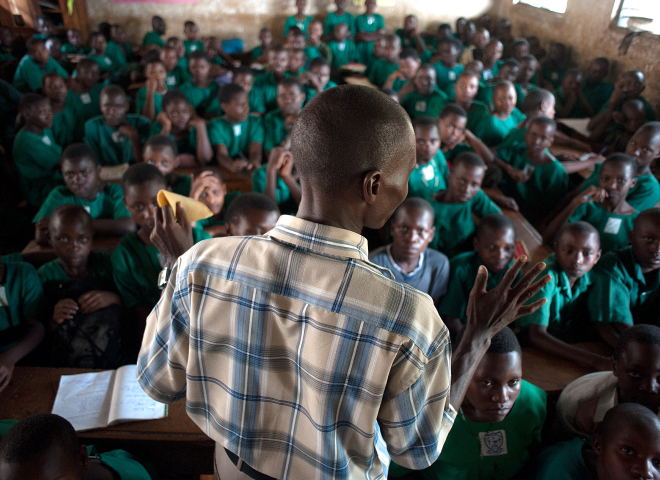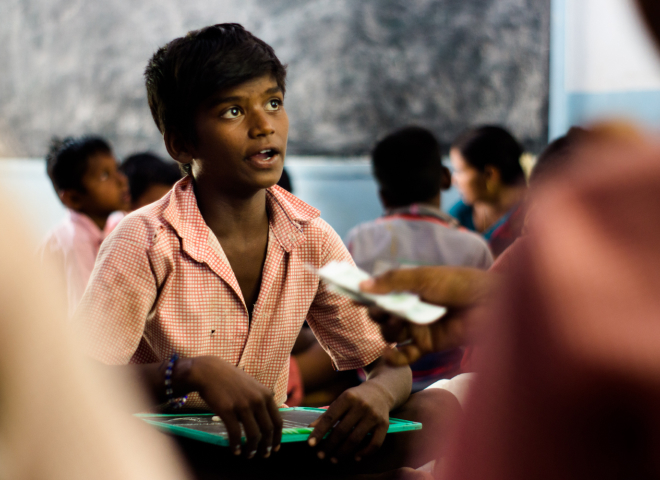About the Program
The STARS program is an initiative to improve education quality in Rwanda through performance-based compensation. It builds on a previous evaluation supported by IPA and gui2de, which found that pay-for-performance contracts improved teacher performance—particularly in classroom presence and pedagogy—and enhanced student learning outcomes, with no negative impact on teacher recruitment. IPA is now partnering with researchers, gui2de, and the Rwandan government to identify, test, and scale the most effective designs for integrating performance-based compensation into teacher contracts and to provide technical assistance for nationwide implementation.
Researchers
| |||||||||||||||||||||||||
 |
| Georgetown University Initiative on Innovation, Development and Evaluation (gui2de) |
Implementation Partners
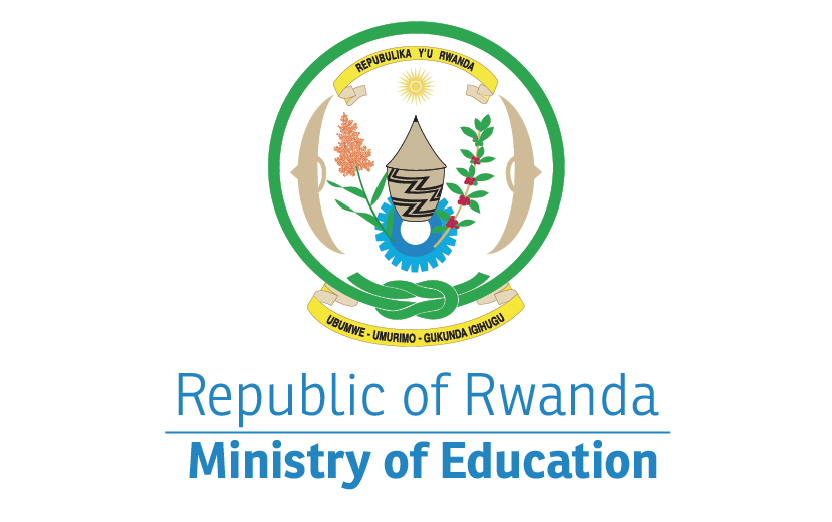 | 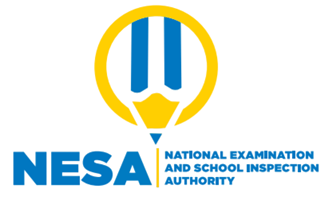 | 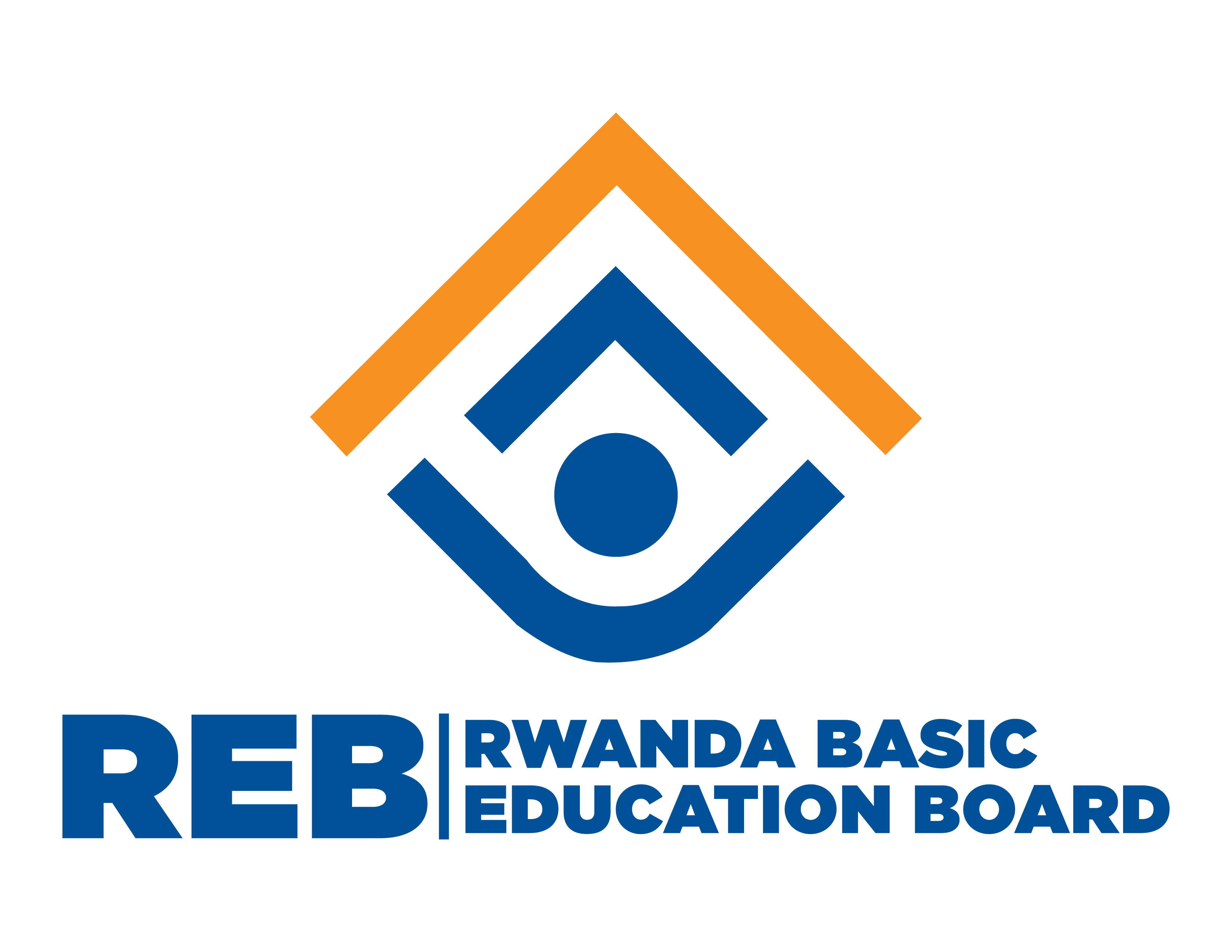 |
| Rwanda Ministry of Education (MINEDUC) | National Examination and School Inspection Authority (NESA) | Rwanda Basic Education Board (REB) |
Funding Partners
 |  | |
| AFD Fund for Innovation in Development (FID) | FCDO What Works Hub for Global Education (WWHGE) | |
| USAID-DIV supported the project from August 2022 through January 2025. | ||
The Challenge
Rwanda's education system faces multi-dimensional challenges with teaching and learning.
- Nearly 20 percent of primary school teachers leave the profession annually
- Only 37 percent of teacher graduates actually pursue teaching jobs after graduation
- Fewer than 40 percent of Primary 3 students meet expected English proficiency benchmarks
- Less than 60 percent of students achieve math proficiency standards
- Performance gaps are widening in economically disadvantaged districts
In response to these challenges, in recent years, Rwanda has implemented education reforms including a 2022 salary increase of 40-80 percent of net income for teachers and the development of the Comprehensive Assessment Management Information System (CAMIS) launched in 2019-2020. CAMIS serves as Rwanda's national digital platform where teachers regularly record student learning outcomes.
The Evidence
From 2015 to 2018, researchers partnered with IPA to rigorously evaluate whether a pay-for-performance model could improve teacher performance. The study found that this approach led to better teaching quality and improved student learning, without discouraging teacher recruitment—a common concern with performance-based pay.
Is A Pay-For-Performance Model For Teachers Effective In Improving Educational Outcomes? Evidence From Rwanda |
The ability to recruit, elicit effort from, and retain civil servants is a central issue for any government. Can pay-for-performance contracts successfully maintain a skilled and motivated workforce? In Rwanda, researchers partnered with the Rwanda Education Board to design a pay-for-performance contract for teachers and measure its impact on both the composition of recruited teachers and their performance. The results showed that pay-for-performance contracts had no negative impact on teacher recruitment and had a positive impact on teacher performance, especially in classroom presence and pedagogy, as well as on student learning. |
Building on these positive findings, Rwanda’s Ministry of Education (MINEDUC) established a government task force—led by IPA, gui2de, and the National Examination and School Inspection Authority (NESA), and including departmental agencies and development partners—to guide the design and scale-up of performance-based bonuses within national teacher contracts. This effort is being implemented through the STARS program, a four-year initiative that began in the 2022–23 school year.
The STARS Approach
Teacher contracts in Rwanda have traditionally relied on the imihigo teacher performance management system, where teachers set annual targets and receive bonuses of 0–5 percent of their salary based on their performance. However, the system is hindered by:
- Subjective evaluation criteria
- Fixed bonuses rather than meaningful performance incentives
- Lack of clear links between teacher practices and student learning
- No standardized method for measuring classroom effectiveness
The STARS program introduced a pay-for-performance contract model to strengthen teacher performance and student learning outcomes in Rwanda. All STARS contracts are built on a common performance-based framework that evaluates teachers across five key dimensions, known as the "5Ps":
- Presence: Classroom attendance, verified through unannounced visits
- Preparation: Quality of lesson planning, assessed during unannounced school visits
- Pedagogy: Teaching quality, evaluated through classroom observations
- Participation in CAMIS: Accurate and consistent entry of student assessment data into the national system
- Pupil Learning Gains: Student progress measured against previous performance
Teachers receive annual bonuses of 3 percent or 5 percent of their salary, based on their overall performance scores (3 percent for scores between 70–79 and 5 percent for scores of 80 or above). IPA and the research team are testing several variations of this contract model to determine which approaches most effectively drive improvements in teacher performance and student learning.
Variations Tested
Base Model (Model A) | Model B.1 – Headteacher Assessments | Model B.2 – Performance Feedback | Model B.3 – Threshold Bonuses |
What it tests: Standard performance-based contracts using inspector evaluations of teacher presence, preparation, and pedagogy, plus student learning data. Purpose: Serves as the comparison point for other variations. | What it adds: Headteachers evaluate teachers on the same teaching dimensions as inspectors. Impact: Headteacher evaluations count for 10% of a teacher’s performance score, incorporating school-level perspective. | What it adds: Teachers receive regular (termly) feedback on how they rank compared to peers. Purpose: Tests whether awareness of performance alone (without changing rewards) motivates improvement. Status: Dropped after Year 2 due to limited impact. | What it adds: A tiered bonus system based on teacher ranking (initially planned). Note: Due to system constraints, this model became functionally identical to Model A. Status: Dropped after Year 1. |
Model B.4 – Enhanced Assessment Verification | Model B.5 – Headteacher Performance Incentives | Model B.6 – Combined: Teacher & Headteacher Contracts | Model B.7 – Combined + Expanded Student Re-testing |
What it adds: Re-testing an additional 5% of students to improve accuracy of learning outcome data used in teacher evaluations. Purpose: Strengthens data integrity and accountability. | What it adds: Headteachers receive imihigo contracts where 50% of their evaluation is based on overall teacher performance at their school. Purpose: Aligns school leadership incentives with teacher support and school-wide improvement. Status: Added in Year 2 | What it combines: Builds on B.1 by adding updated imihigo contracts for headteachers (like B.5). Purpose: Aligns both teacher and headteacher incentives toward learning goals. Status: Added in Year 3 | What it adds: Builds on B.6 with additional student re-testing (like B.4) to further verify learning outcomes. Purpose: Combines leadership incentives with stronger accountability through better data. Status: Added in Year 3 |
Results
Year 1 (2022–2023): Laying the Groundwork
STARS was launched in 248 schools and introduced five types of performance-based contracts. Inspectors assessed teacher performance across five key dimensions, known as the "5Ps." Early results showed clear improvements in lesson preparation, instructional quality, and consistency in data entry into the national education system (CAMIS). Teacher presence, which was already high, saw only a modest increase.
While student learning outcomes did not show significant improvement in the first year—a result consistent with past experience—the government extended all contract models for a second year to better evaluate their long-term effects.
Year 2 (2023–2024): Signs of Learning Gains
STARS expanded to nearly 345 schools, including a new contract model that introduced incentives for headteachers. Teacher preparation and classroom practices remained strong, and CAMIS participation in participating schools rose by 5 percentage points. Crucially, some contract models—especially those involving headteacher evaluations, updated headteacher imihigo, and student re-testing—began to show early signs of improving student learning. Based on these results, the government decided to drop the less effective models and focus on the most promising ones in Year 3.
Year 3 (2024–2025): Testing the Best Designs
In its third year, alongside the core components for evaluating teacher performance, STARS is refining and testing the features from the previous year, with the highest impacts on student learning and teacher performance: additional headteacher evaluations of teachers performance with a structured scoring process, updated performance contracts (imihigo) for headteachers linked to teachers’ performance in their schools, and expanded student re-testing for validating learning gains. Six contract models are now being implemented—four from Year 2 and two new combinations. We are also working closely with the Ministry of Education to prepare for a possible national scale-up. This includes strengthening data systems, training staff, and embedding the program in existing government structures to ensure long-term sustainability and reach for all 66,000 teachers and nearly 3 million students.
Collaboration Model: Embedded Evidence Lab
To support the scale and sustainability of the STARS initiative, IPA established an Embedded Evidence Lab within Rwanda’s Ministry of Education in 2019. These Labs are dedicated teams embedded in government institutions to enhance policymaking through the routine use of data and evidence. In Rwanda, the Lab goes beyond generating research. It plays a central role in:
- Informing policy with evidence: Together with IPA, gui2de and researchers, the Lab supports the Ministry in identifying effective performance-based teacher contracts and other education reforms. It also helps integrate data from national systems like CAMIS (school-level data) and TMIS (teacher-level data) into decision-making processes.
- Strengthening systems for scale: The Lab is enhancing Rwanda’s education data infrastructure by improving the coverage and use of systems like CAMIS and TMIS. It supports real-time monitoring of teacher performance and contract compliance, streamlines data reporting from schools to national systems, and builds the capacity of inspectors and district officers to use this data—laying the groundwork for nationwide adoption of performance-based contracts.
- Enabling institutional change: The Lab supports the long-term integration of performance-based teacher contracts by providing technical input on policies and legal frameworks, revising teacher management and inspection guidelines, and helping establish delivery units to monitor progress under the imihigo system. It also strengthens coordination across government partners to ensure effective implementation.
This embedded model ensures that evidence is not only produced but used—supporting lasting improvements in student learning, teacher performance, and system-wide accountability.
Impact
The STARS program is playing a pivotal role in advancing Rwanda’s Foundational Learning Strategy by helping to translate policy goals into meaningful change in classrooms. It supports two key pillars of national education reform: improving instructional quality and strengthening accountability systems.
At the classroom level, STARS is improving how teachers teach and engage with students. Through performance-based imihigo contracts, teachers are rewarded not just for showing up, but for how well they teach and how much their students learn. This approach gives teachers a clear incentive to focus on what matters most—better learning outcomes for children—and equips headteachers to support and manage performance more effectively.
At the system level, STARS is helping Rwanda build the infrastructure needed for sustainable, data-driven education reform. For example, the program has supported improvements to CAMIS, the national education data system, which now tracks learning outcomes for 89 percent of enrolled students. This data is essential for monitoring progress, identifying gaps, and making informed decisions at scale.
By aligning incentives, improving data systems, and building government capacity, STARS is creating the conditions for long-term impact. It is embedding a culture of accountability and continuous improvement across Rwanda’s education system—helping ensure that every teacher is supported to succeed, and every student has a better chance to learn.



